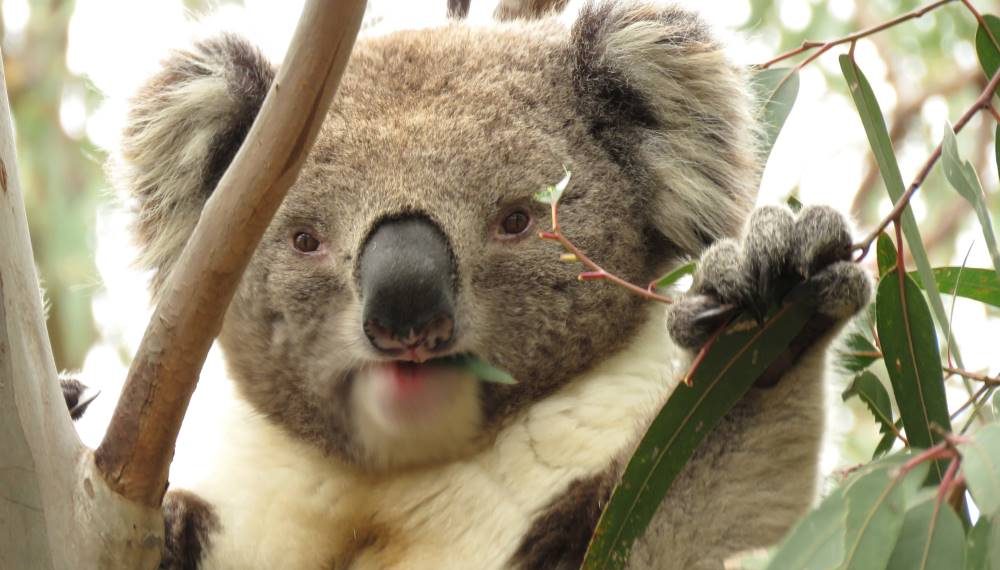The diet of koalas is fascinating, and the subject of many stories and scientific publications. But how do koalas eat? Are they delicate and classy, or slathering, voracious beasts? Do they eat one huge meal a day, or nibble constantly? And do they sit over a meal for hours, or do they bolt it down fast?
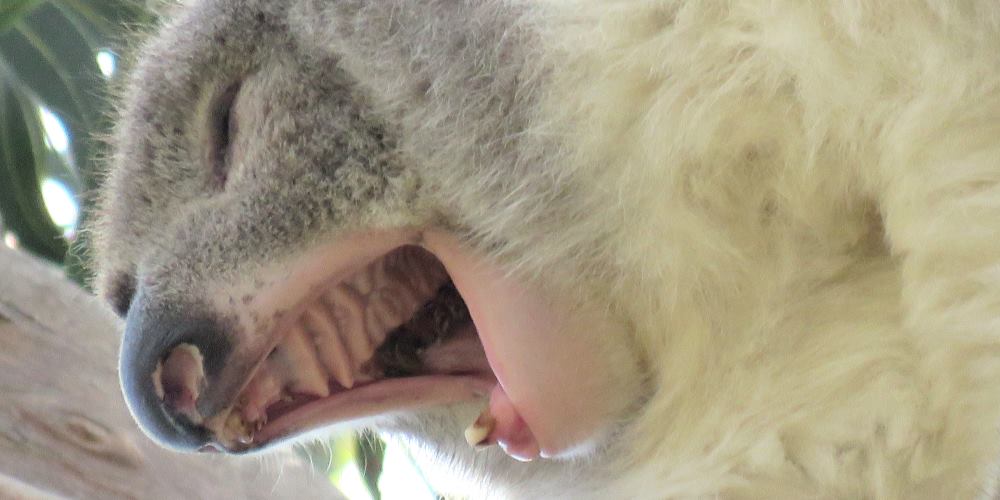
Let’s answer those questions, based on 15 years of daytime observations of a healthy koala population in the You Yangs, Victoria.
Note: Koalas, eucalyptus trees and climate differs around Australia, so koala feeding behaviour in other places might be entirely different.
..
How long does a koala eat for?
Once a koala decides to feed, they don’t mess around. We have noticed that most adult koala feeding sessions last for 30 minutes to one hour. Some go for even longer: we have witnessed continuous feeding for 90 minutes, and many instances where we visit a koala and they are eating, and then visit again 2 hours later and they are still eating.
Baby koalas seem to eat more frequently than their mothers, and for shorter duration.
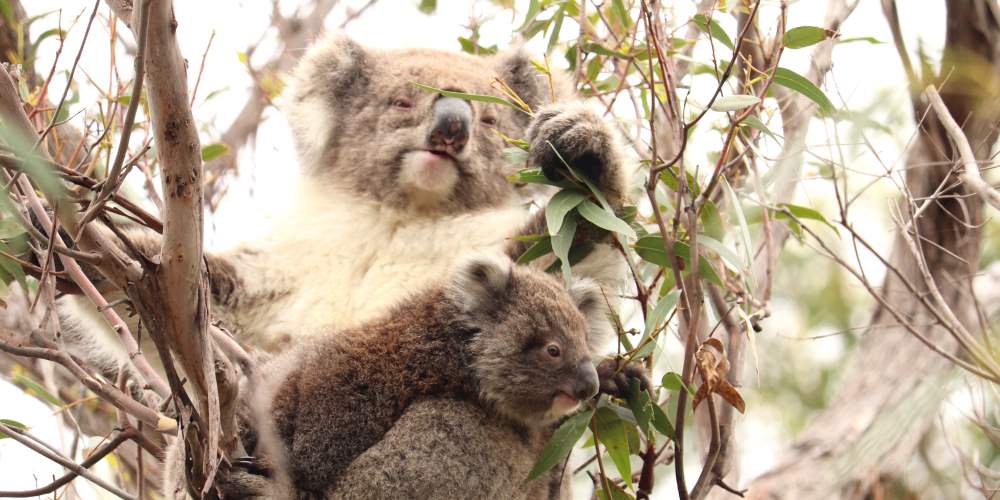
..
Do koalas do all their daily feeding in one long session or many short ones?
Koalas seem to do their daily feeding in a few long sessions, a couple of times a day. During 2019 most of our observations of feeding were a single session per koala, or two observations of feeding within 2 hours.
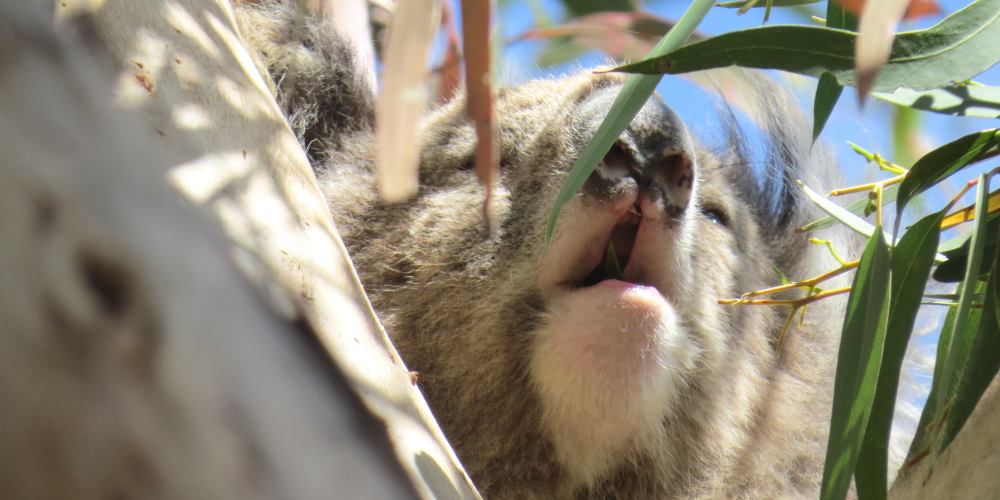
All the records in 2019 of feeding bouts spaced out by more than 2 hours*.
Winjku <1yo immature female: 18/10 feeding observed from 10.39-11.17 and 15.42-52 (4 hours apart)
Babarrang mature female: 13/11 feeding observed at 08.32 and 12.34 (4 hours apart)
Lakorra young mature female: 25/11 feeding observed at 11.36 and 17.48-57 (6 hours apart)
Ngardang mature female: 25/11 feeding observed at 08.24 and 17.57 (9 hours apart)
Djadja mature female: 15/12 feeding observed at 09.38 and 14.04 (4.5 hours apart)
Ngardang mature female: 17/12 feeding observed at14.02 and 16.23 (2+ hours apart)
*As feeding bouts can go for over an hour, I consider any feeding that is observed within 2 hours could be part of one extended feeding bout.
..
What time of day do koalas feed?
The time of day that koalas feed varies a lot. We have seen feeding at every hour of the day, with the majority of records between 10 and 11am. Why is that time popular? We don’t know.
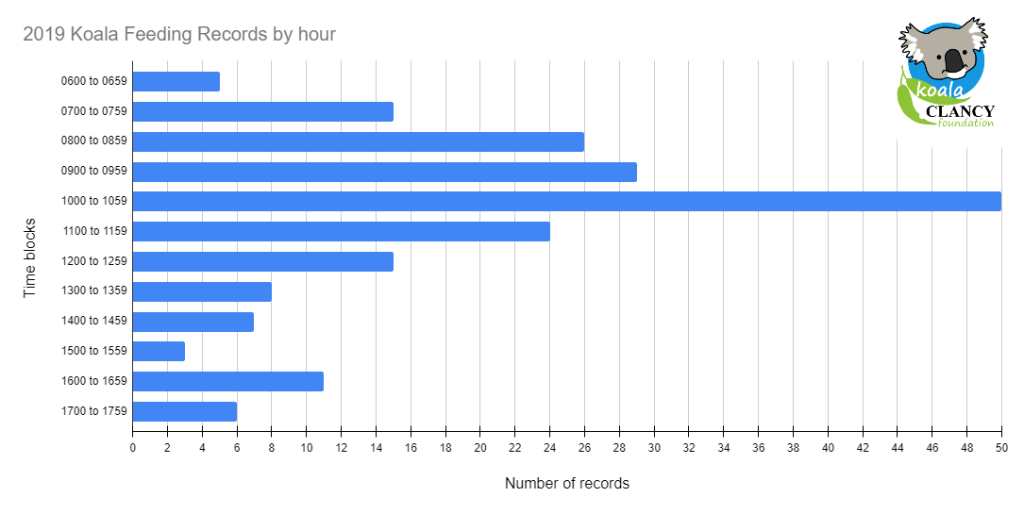
If we split the feeding observations up by warm/cool weather seasons, with ‘summer’ from November to March and ‘winter’ from April to October, things change. The winter graph looks very similar, but the summer graph is more evenly distributed. There are more feeding records in winter: 118, than in summer: 84.
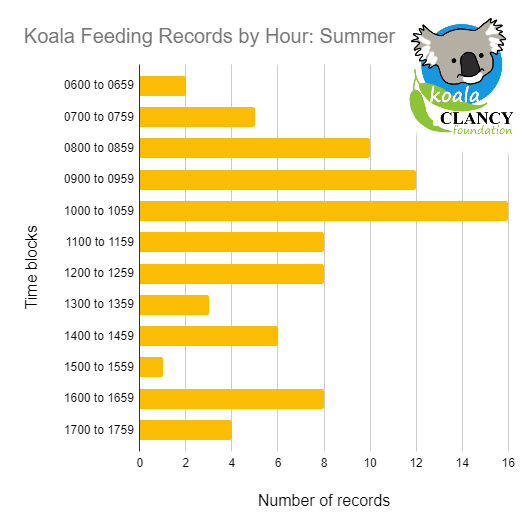
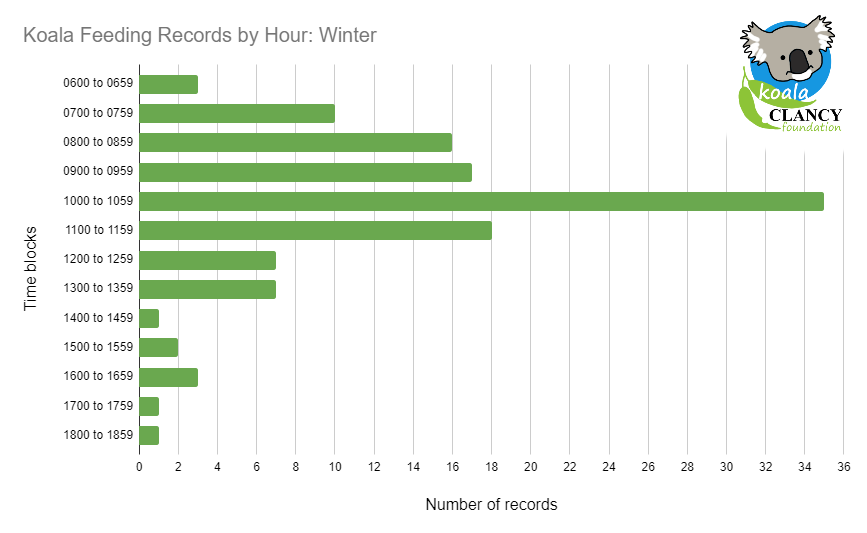
Some days we will see 3 to 5 koalas, only one will be eating and the others won’t. Other days every koala we see will be feeding.
Note: Our observations are mostly during the daylight hours, from 6.30am to 6pm, with a peak between 7am and 12noon. We don’t know what happens overnight. We suspect that a lot more feeding occurs at night, especially in summer. Other observers in other parts of Australia have noted koalas eating during the night. It’s worth noting that in 2019 we observed 234 instances of natural koala feeding, but we observed 1425 koalas that year, with an average of 4 observations of each koala. So our records of feeding are fairly low, only about 4% of total observations.
..
Koala feeding style:
Though regarded as fussy eaters, once a koala has decided upon eating a bunch of leaves, they are voracious. They don’t delicately pick at leaves one by one, they churn through entire bunches of leaves. They remind me of a hungry teenager with a packet of potato chips: eaten by the handful.
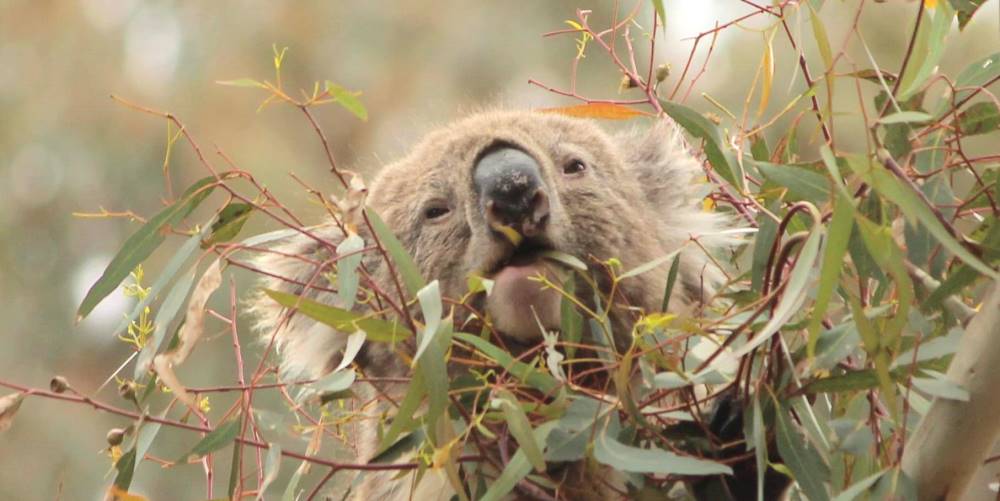
Frequently a koala will stop, mid-chew, and remain motionless for several seconds with a dazed look on their face and several leaves protruding from their mouth. Its really funny. I don’t know why they do this, but it might be their way of keeping in touch with their community and listening out for danger. After all, if you’re engrossed in eating for an hour, you could miss things. Watch:
..
How do koalas get leaves into their mouths?
Koalas often roost high in trees all day. The leaves are nearby. When they are ready to feed they climb about looking for the perfect bunch – often it is hard to get as many of the leaves are on small branchlets that won’t take a koala’s weight. But koalas are masters of creative thinking, and can position themselves to reach, or will lever one branch to catch the leafy branch and bring it within reach.
Then koalas will use their hands to bring the leaves to their mouths. Using their jaw and tongue they scoop up the leaves and snip them off with their sharp upper incisors. A lot of chewing by the molars ensues – eucalyptus leaves are hard.
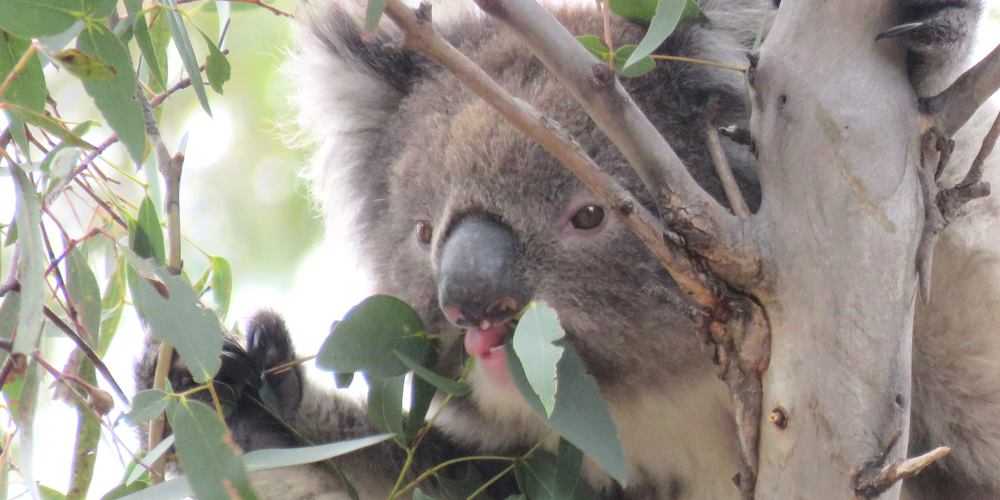
..
Is there anything that stimulates koalas to feed?
Yes! Rain. We have noticed many times that the onset of rain will encourage koala feeding behaviour. This could be a way of getting extra water, or it could be that rain cools them down enough to offset the energy use and heat generated by eating. Watch:
..
Do koalas eat mature leaves or young leaves?
They eat both. There has long been an idea that koalas prefer the juicy tips (new leaves) on the outer ends of branches. But most of the feeding we observe is of koalas eating mature leaves. There may be times when koalas do prefer the new growth. Or maybe koalas prefer the new growth, but it is difficult for large adult animals to get to it.
The choice of which leaves to eat on every tree is very complex. Recent research led by Dr Karen Marsh and Dr Kara Youngentob at ANU is shedding some light on why koalas might choose young leaves of one tree, and mature leaves of another tree, or even young leaves one day and mature leaves the next on the same tree. The proportions of plant secondary metabolites (toxins) and available protein varies from tree to tree, and is influenced by the tree’s genes, location and individual characteristics. Further, a koala’s ability to process the toxins varies with the heat of the day.
I’ve included some references to this fascinating, evolving science in the Notes & References section at the bottom.
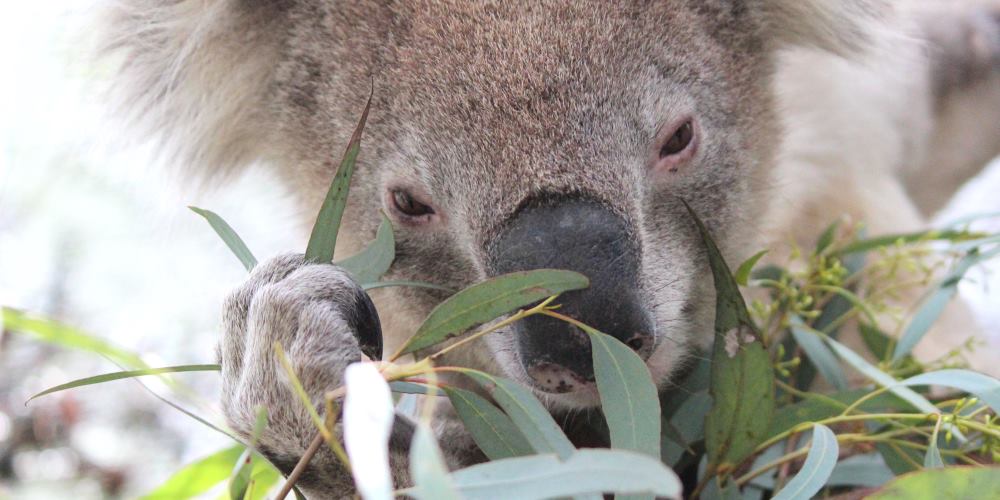
..
Do koalas eat just one species of gum tree?
No. This is a myth. Koalas certainly have favourite species of eucalyptus, but over 15 years we have recorded them eating every species of eucalypt that grows in the You Yangs, including non-native species that have been planted.
In fact, some of the introduced species of eucalypts are quite popular with koalas. Sugar Gum, an introduced species from South Australia, is eaten more than local native Manna Gum. Swamp Yate, from Western Australia, and Spotted Gum from New South Wales are eaten fairly frequently too.
Trees don’t occur in even quantities throughout the research area of course. The most numerous species in the area are River Red Gum, Yellow Gum, and Sugar Gum, the same trees that koalas are most often seen feeding in.
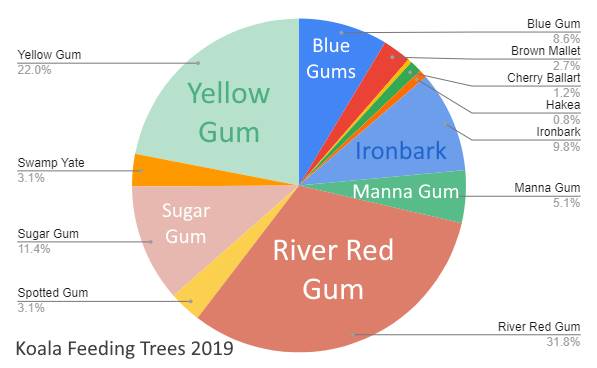
..
Do koalas eat the same trees all year?
No, not in our experience. Preferred species changes seasonally in the You Yangs, and is probably affected by a combination of factors including climate, flowering time, and proximity to surface water. River Red Gum Eucalyptus camaldulensis was the most preferred tree for roosting in every month of the year in 2018, but only for the first half of 2017. There are dramatic peaks in River Red Gum usage in summer (2017: March, February & January 2018: December, March & October ) and usage falls in winter (2017: June & July 2018: May, August & September). Blue Gum Eucalyptus globulus was highly preferred in May in 2018, Ironbark E. tricarpa in May 2017, and Yellow Gum E. leucoxylon in summer (2017: November & January; 2018: February & November). Introduced Sugar Gum E. cladocalyx is second most preferred in December (2017) and December & January (2018). Introduced Swamp Yate E. occidentalis was very popular in April & May and November in 2017.
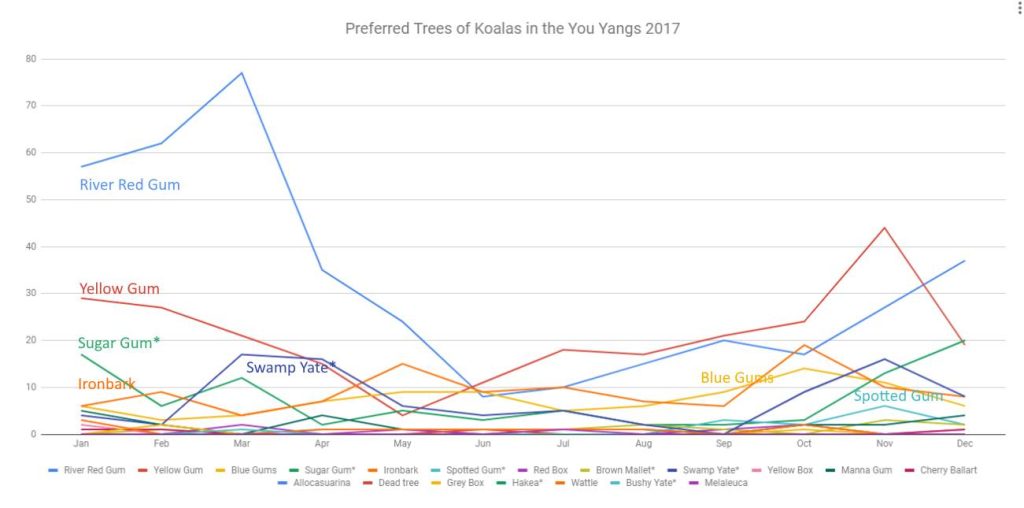
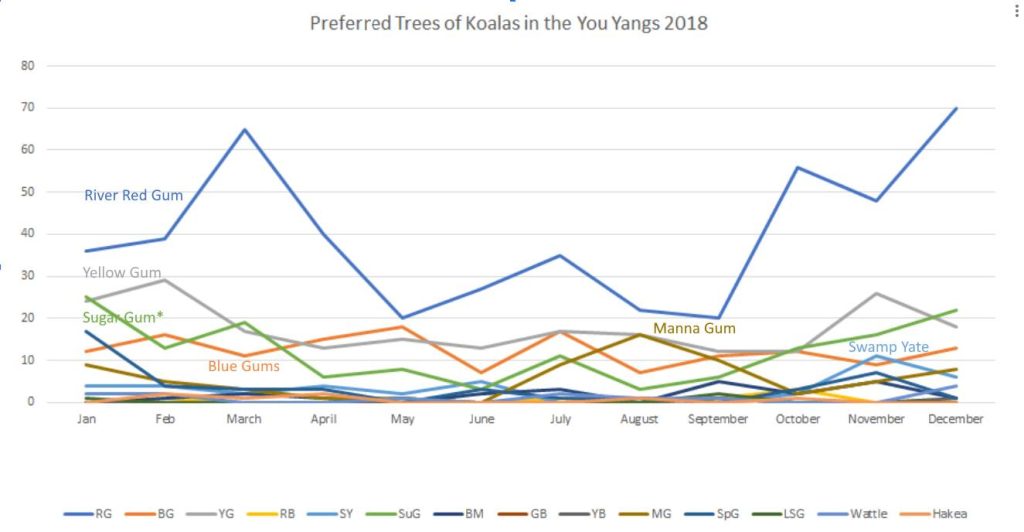
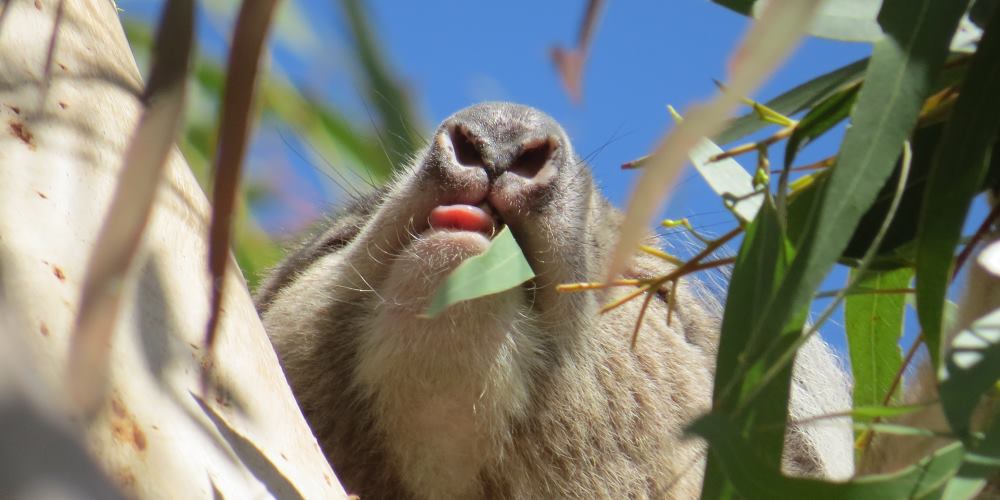
In our region, koalas are usually seen eating the tree they have been roosting in. In other parts of Australia this is not necessarily the case, especially where it is very hot during the day – they choose one shady cool tree for roosting, and another for eating. This may be changing in our area though – one of our female koalas uses Melaleucas a lot, and we have noticed an increasing preference for Melaleuca and Hakea as roost trees. Yet we rarely see them eat Melaleuca or Hakea, so they must be moving out of those trees to feed.
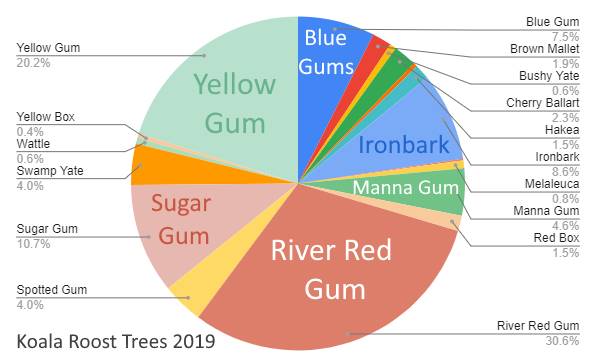
In 2019, we observed 202 instances of natural koala feeding. If you compare this chart to the earlier pie chart “Koala Feeding Trees 2019”, you can see that the trees they fed in are directly proportional to the trees they were seen roosting in.
..
Do koalas eat anything other than eucalyptus?
Koalas have been recorded eating some other species of tree, but we have rarely seen it. We do have 3 records of koalas feeding on Cherry Ballart Exocarpos cupressiformis, 2 records of koalas nibbling on Pincushion Hakea Hakea laurina but the observations were short duration.
Koalas also known to eat tree bark, and soil. We haven’t seen this much in the You Yangs. We do have one record in January 2019 of young male koala Bunyip stripping off a bit of bark and eating it.
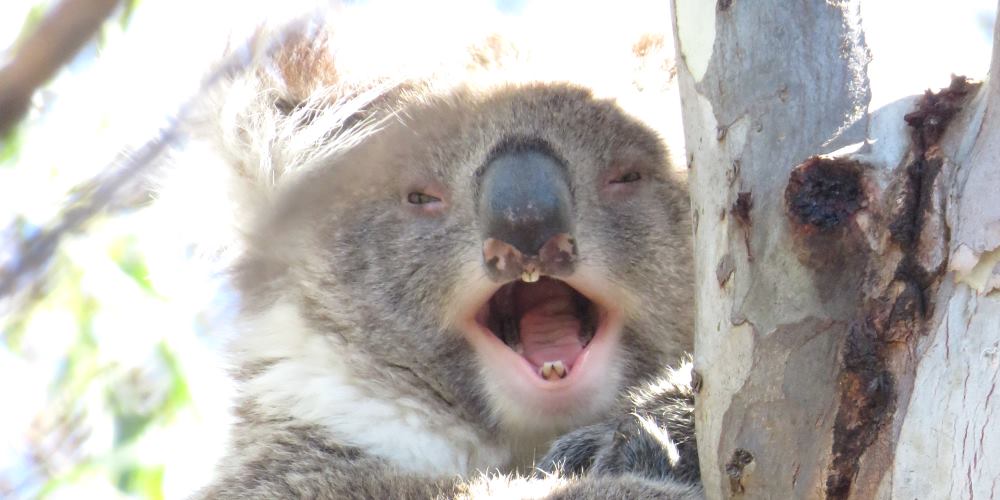
..
Special thanks to Conservation Travel Australia‘s Wildlife Guides and Koala Researchers for the hours of non-intrusive observations, and thousands of photos and film required to get this information. Also thanks to the Deakin University Environmental Science and Biomedical Science students for helping prepare the data and graphs over two placements in July and November 2021.
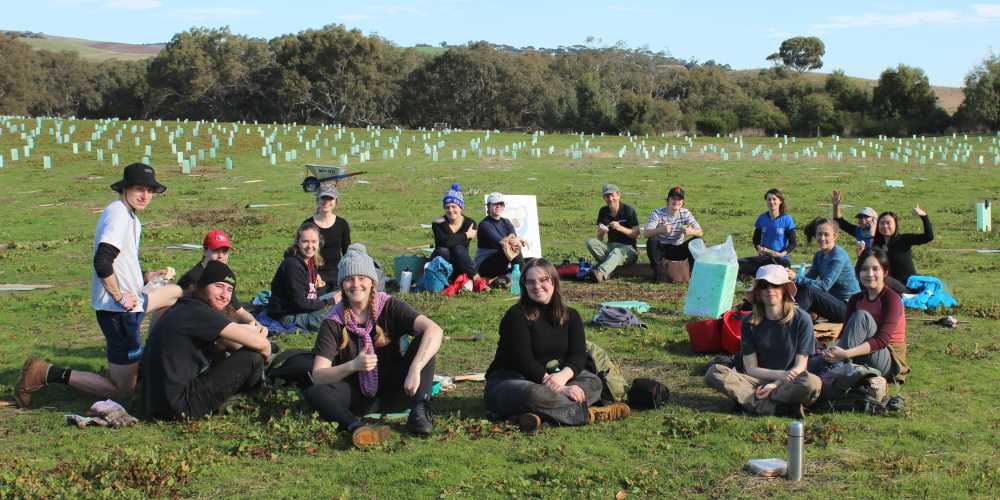
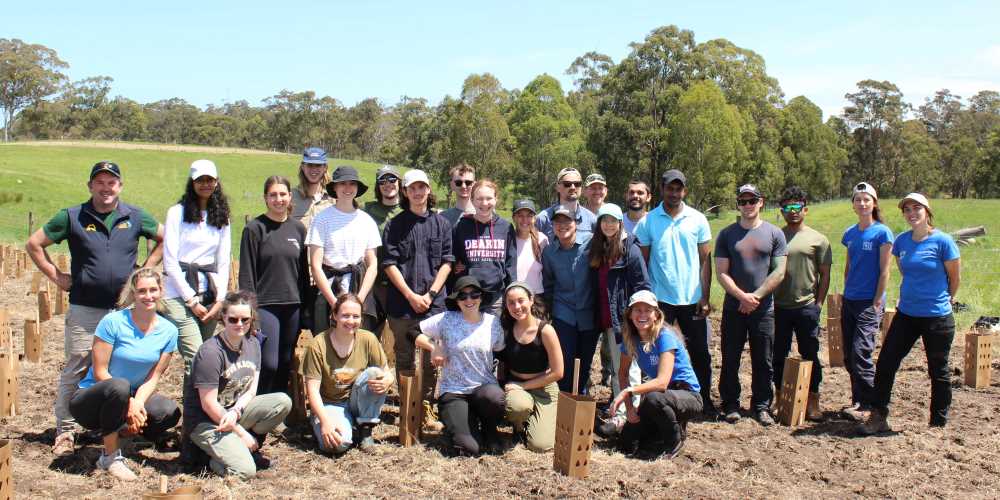
..
NOTES & REFERENCES:
Marsh, K.J., Ward, J., Wallis, I.R. et al. Intraspecific Variation in Nutritional Composition Affects the Leaf Age Preferences of a Mammalian Herbivore. J Chem Ecol 44, 62–71 (2018). https://doi.org/10.1007/s10886-017-0911-3
Jessie Au, Robert G. Clark, Chris Allen, Karen J. Marsh, William J. Foley, Kara N. Youngentob, A nutritional mechanism underpinning folivore occurrence in disturbed forests, Forest Ecology and Management, Volume 453, 2019, 117585, ISSN 0378-1127, https://doi.org/10.1016/j.foreco.2019.117585.
Marsh KJ, Blyton MDJ, Foley WJ, Moore BD. Fundamental dietary specialisation explains differential use of resources within a koala population. Oecologia. 2021 Jul;196(3):795-803. https://europepmc.org/article/med/34142232

